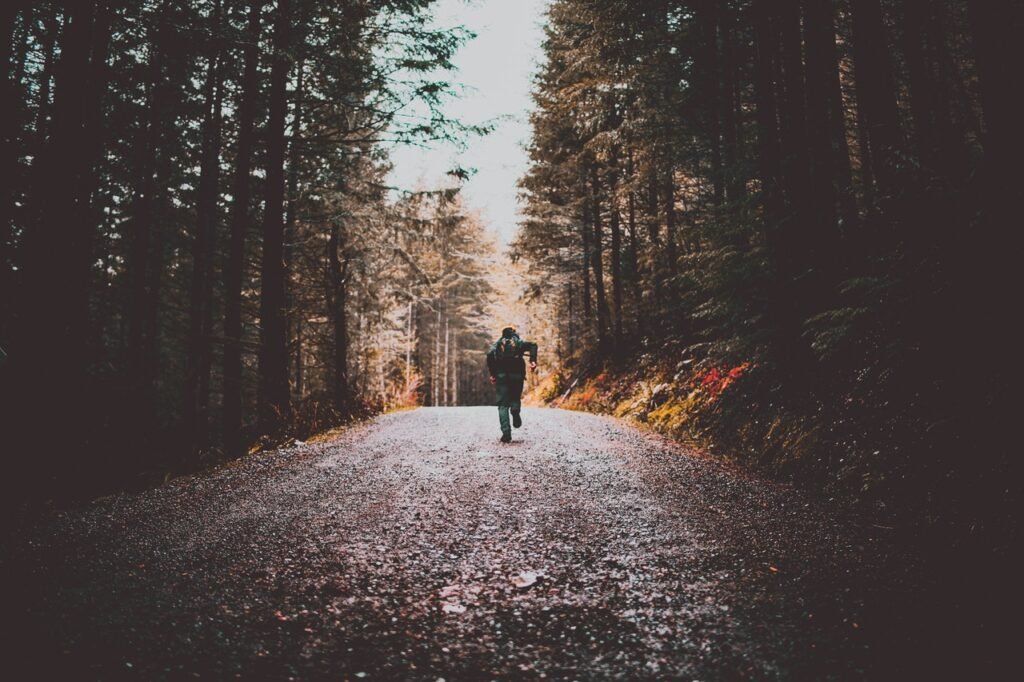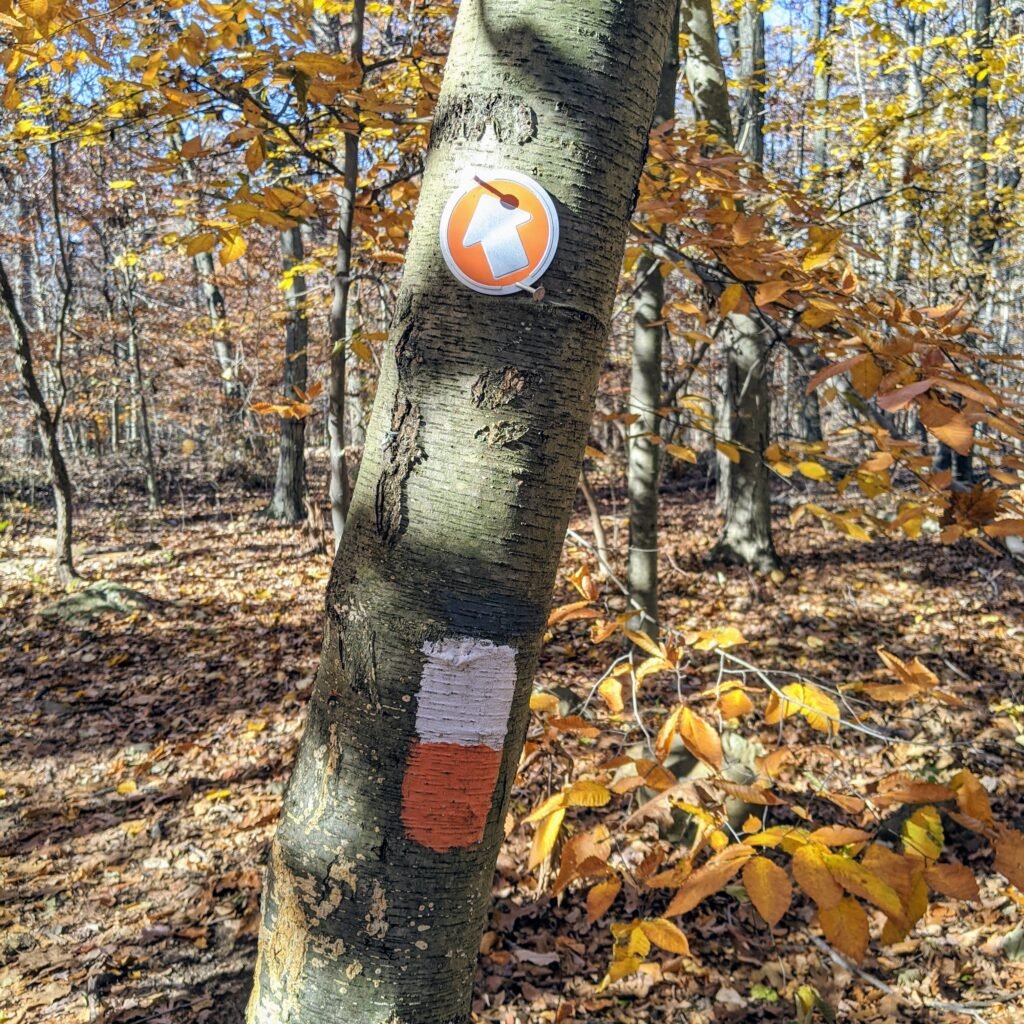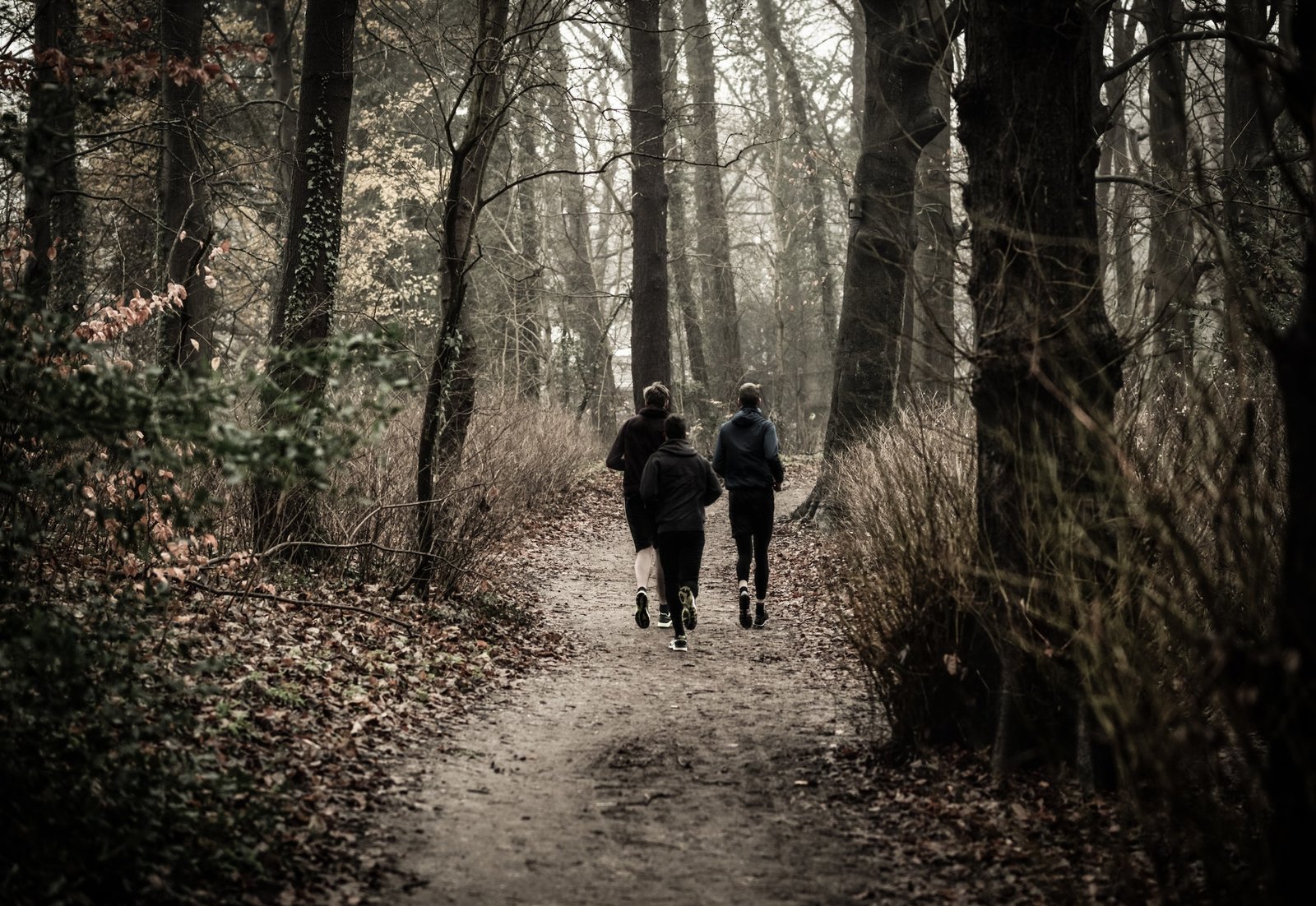There are three types of runners in the world – those who run on tracks, those who run on roads, and those who run on trails. If you’ve ever thought about trail running, here’s a quick guide with everything you need to know.
First, we’ll take a look at the “what” – what is trail running?
Then, we’ll think about the “why” – what are the benefits of trail running and why should you work it into your training?
Finally, we’ll get in to the “how” – a beginner’s guide to how to start trail running and some other tips you should know.
The What – What is Trail Running?
Trail running is running that’s not on a road and not on a track. Sounds simple, but there are a lot of variations within that.
An easy trail run could be through a grassy field or down a gravel road. “Greenways” and “rails to trails” are popular these days, where old train tracks are converted into walking, biking, and running trails. These are on the easier end of the trail running spectrum.

Then there’s the hard stuff. Hiking trails that are only wide enough for one person. Trails that climb hundreds or thousands of feet to the tops of mountains. These more technical trails are best left to the experts and more experienced trail runners.
But there’s plenty of middle ground in between, and you don’t have to be an expert trail runner to enjoy some of the benefits of trail running.
The Why – What Are the Benefits of Trail Running?
So why would anyone want to run on these trails anyway? There are two main benefits of trail running. It makes you a stronger runner and it’s far more exciting than running around a track or down a stretch of pavement.
One of the key benefits of trail running is that it will make you stronger, and this is a great reason to incorporate it into your training – even if it’s only once or twice a week.
When you run on a hiking trail, your footing is uneven and your feet will hit the ground at different angles. This promotes mobility and strengthens some of your joints and stabilizing muscles. Trails often involve more elevation gain, and those hills will help build power and speed. Hit the trails regularly, and you’ll be a much more resilient runner.
The other key benefit of trail running is that it is so much more interesting than jogging on a road or running around a track.
You get to enjoy the sights, sounds, and smells of nature. The landscape will change with the seasons, but there will always be something worth stopping to take a picture of. Chirping birds and babbling brooks make for a great soundtrack, and you’ll find you might not need those headphones anymore. The air is cleaner, and the forest will smell a lot better than car exhaust.
For more on this, check out: Five Benefits of Trail Running – Why You Should Try It This Week.
The How – A Beginner’s Guide on How to Start Trail Running
But how do you get started? Here’s a quick beginner’s guide on how to start trail running.
First, find a trail. You’ll want to start with simple trails that don’t have a lot of elevation gain or tricky footwork. Wider, double track trails made of gravel are a good place to start before you venture out into the single track dirt trails.
Take a look at Trail Run Project or All Trails to browse trails in your neighborhood. They have difficulty estimates for trails, so you can focus on the easier ones.
Familiarize yourself with the map, but most trails are easy to follow. There’s usually a pretty obvious dirt path – where all the other people have been running – and you’ll see markings on trees along the way. But it’s still a good idea to take a phone with you just in case you get lost.

Second, pay attention to the weather. You might be an all-weather runner, and that’s great on the road. But running through a dirt trail after a heavy rain is not fun. You’ll get covered in mud, you’re more likely to slip, and you can actually damage the trails as well. It’s best to wait for a dry spell.
Don’t worry about special gear at first. When you get into more technical trails, you’ll want trail running shoes that have thicker soles and are more stable. But for easy, flat trails you should be find with whatever you use on the road.
Finally, get out there and run. Start small and limit your mileage at first. You’ll be using some new muscles, and it isn’t unusual to feel particularly sore afterwards. You’ll want to build up to longer runs on the trails. Also, be prepared to go slower. Whatever your comfortable pace is on the road, it’ll be significantly slower on a trail. And that’s ok.
Other Tips for Trail Running
Here are some final thoughts about trail running, for beginners and experienced runners alike.
Don’t be afraid to stop. When you’re running on the road, it feels weird to stop in the middle. It’s like a sin. But on a trail, you’re going to see and experience so much, that it’s almost a sin not to stop. Take a picture. Take in the view. It’s ok.
Walk if you have to. On more difficult trails, you might find that you need a quick break. There’s no shame in that. I’ve gone up some pretty steep hills and by the time I got to the top my heart was pounding out of my chest. There are also times that I’ve ended up on thin trails with tough footing. You’re better off walking through the tricky parts than falling on your ass.
Be alert for wildlife. I’ve run into deer and foxes often on the trails near my house. I’ve never had a problem, and for the most part wildlife don’t want anything to do with you. But you want to be aware of your surroundings so you don’t surprise them. That can lead to trouble.
What’s Your Favorite Trail to Run?
For me, it’s all about the South Mountain Reservation in Essex County, New Jersey. I’m mostly partial to it because it’s a half mile from my house. But it’s a great network of trails, and there’s quite a variety of easy and moderately difficult trails to run.
I’ve written about a few of the trails already, and my goal is to map, run, and write about every trail in the network. Read more about the trails at South Mountain Reservation here.
Where do you like to run? I’d love to hear about it in the comments below.
